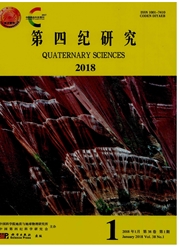

 中文摘要:
中文摘要:
为过去的 20 年,现代人的起源争论在 paleoanthropological 研究收到了注意的重要数量。首先由解剖地现代的人的石块和基因研究的更早的日期的证据支持了,“从非洲”,假设基于包括现代汉语,所有现代的人的祖先来自非洲的信仰。“ Mutiregional 进化”建议的相反的假设那连续进化发生在地区性的规模,为人,古生物学提供强壮的支持上。由于在在 100 和 50 ka 之间的中国的灵长目动物的石块的少量,然而,到后者假设的支持当前是弱的。这是五颗人的石块牙齿的这里的一份报告,并且从一个最新发现的洞地点联系石头工具和哺乳动物石块, Huanglong 洞,在 YunxiCounty 定位了,湖北省,中国。初步的研究显示:(1 ) 人的石块的词法特征近来类似于那些从中国的更新世人的石块;(2 ) 石头工具显示两个的模式中国的南部、北的旧石器时代的文化;(3 ) 哺乳动物石块代表“ Ailuro-poda-Stegodon ”在整个更新世住在南部的中国的动物区系的单位。当人的牙齿显示二可能的年龄,在动物牙齿和一株石笋上标明日期的 ESR 和 U 系列源于一样的层:103+-1.6 ka 和 44 +-12。5 ka。另外, toother 证据这里介绍了,洞的灵长目动物的职业是可能的 around100 ka,这被相信。如果这年龄进一步被证实, Huanglong 洞将是在解剖地现代的人生活了的中国的第一个迟了的 Pleistocenehominid 石块地点大约 100 ka。从 Huanglong 洞的人的石块和另外的相关材料将提供重要,为现代汉语的研究在起源的信息。
 英文摘要:
英文摘要:
For the past 20 years the modern human origins debate has received a significant amount of attention in paleoanthropological research. Primarily supported by the evidence of earlier dates of anatomically modern human fossils and genetic studies, the "Out of Africa" hypothesis is based on the belief that the ancestor of all modern humans, including modern Chinese, came from Africa. The opposite hypothesis "Mutiregional evolution" proposes that continuous evolution occurred on a regional scale, for which human paleontology offers strong support. However, due to the paucity of hominid fossils in China between 100 and 50 ka, support to the latter hypothesis is currently weak. This is a report here of five human fossil teeth, and associated stone tools and mammal fossils from a newly discovered cave site, Huanglong Cave, located in Yunxi County, Hubei Province, China. Preliminary studies indicate: (1) the morphological features of the human fossils resemble those of late Pleistocene human fossils from China; (2) the stone tools display patterns of both the southern and northern Paleolithic cultures of China; (3) the mamma poda-Stegodon" faunal fossils represent the "Ailurounit which lived in southern China throughout the Pleistocene. ESR and U-series dating on animal teeth and a stalagmite derived from the same layer as the human teeth indicate two possible ages: 103±1.6 ka and 44±12.5 ka. In addition to other evidence presented here, it is believed that hominid occupation of the cave was likely around 100 ka. If this age is further substantiated, Huanglong Cave will be the first late Pleistocene hominid fossilsite in China where anatomically modern humans lived about 100 ka. The human fossils and other related materials from Huanglong Cave will provide important information for research on the origin of modern Chinese.
 同期刊论文项目
同期刊论文项目
 同项目期刊论文
同项目期刊论文
 期刊信息
期刊信息
